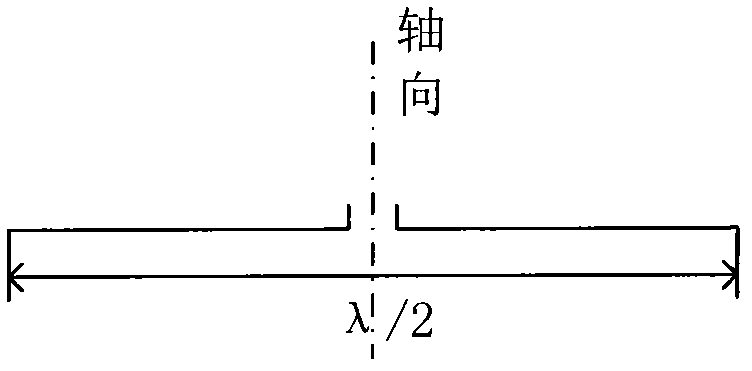Broadband double circular polarization feed source of radio heliograph
A feed and imager technology, which is applied in the field of broadband feeds, can solve the problems that the feed cannot meet the requirements of the low frequency part of the frequency range, cannot receive dual circularly polarized waves at the same time, and the efficiency of the antenna feeder system is reduced, and achieves reliability. High, easy to process, size reduction effect
- Summary
- Abstract
- Description
- Claims
- Application Information
AI Technical Summary
Problems solved by technology
Method used
Image
Examples
Embodiment Construction
[0024] a) Through the index characteristics required by the project, design, simulate, and optimize the length and width of the vibrator of the feed source to obtain the optimal value.
[0025] b) The most typical planar log-periodic antenna is a printed log-periodic dipole antenna, which is composed of N printed vibrators periodically arranged in parallel on the collection line. Its structure is as follows image 3 shown. The size and position of each vibrator of the antenna are related to the serial number of the vibrator, and are designed and arranged according to the structural scale factor τ, satisfying
[0026] τ = l n - 1 l n = s n - 1 s n
[...
PUM
 Login to View More
Login to View More Abstract
Description
Claims
Application Information
 Login to View More
Login to View More - Generate Ideas
- Intellectual Property
- Life Sciences
- Materials
- Tech Scout
- Unparalleled Data Quality
- Higher Quality Content
- 60% Fewer Hallucinations
Browse by: Latest US Patents, China's latest patents, Technical Efficacy Thesaurus, Application Domain, Technology Topic, Popular Technical Reports.
© 2025 PatSnap. All rights reserved.Legal|Privacy policy|Modern Slavery Act Transparency Statement|Sitemap|About US| Contact US: help@patsnap.com



